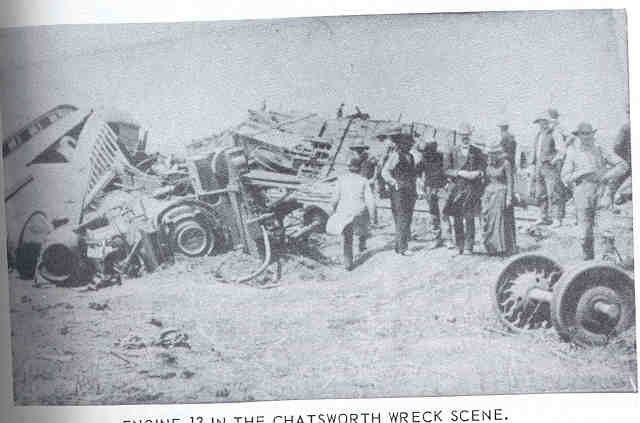
It was perhaps five minutes before midnight when Engineer David Sutherland caught a glimpse of a burned out culvert in his headlights, and it was far too late for him to stop the train and avoid the crash.

Engine 13 in the Chatsworth wreck scene.
His engine twenty-one in the lead somehow hurtled over the weakened structure, but Engineer E. B. McClintock's number thirteen crashed through and turned over, killing McClintock instantly. The following five cars became kindling wood, nearly all of the eighty-one killed and 170 injured were in those cars. Fortunately, the El Paso folks were riding in cars near the rear of the train and none was injured. Fleming, Kerr and Dr. E. P. Hazen of Ft. Madison, Iowa were only shaken up so they walked the two and one-half miles back to the Chatsworth station to give the alarm and get help to the scene. They had trouble getting the wire to Peoria as the Farmingdale station was on fire at the same moment. They aroused the mayor who was James A. Smith Sr., father of James A. Smith Jr. of El Paso. The depot building, still standing, and the Filber building were converted into morgues until the bodies could be identified and claimed. Another survivor was E. N. Armstrong, general superintendent of the T. P. & W. railroad, who took charge of everything, placing the notice we reproduce on the door of the Filber building, which was sometime later taken off by James A. Smith Jr. and preserved as a memento of the tragedy.
M. H. Cassell4 had been El Paso's postmaster and had at that time recently moved to Washington, Illinois. He boarded the ill-fated train, and those who had talked to him declared he had intended getting off at El Paso, but that he was asleep when the train arrived here and was
Page 75